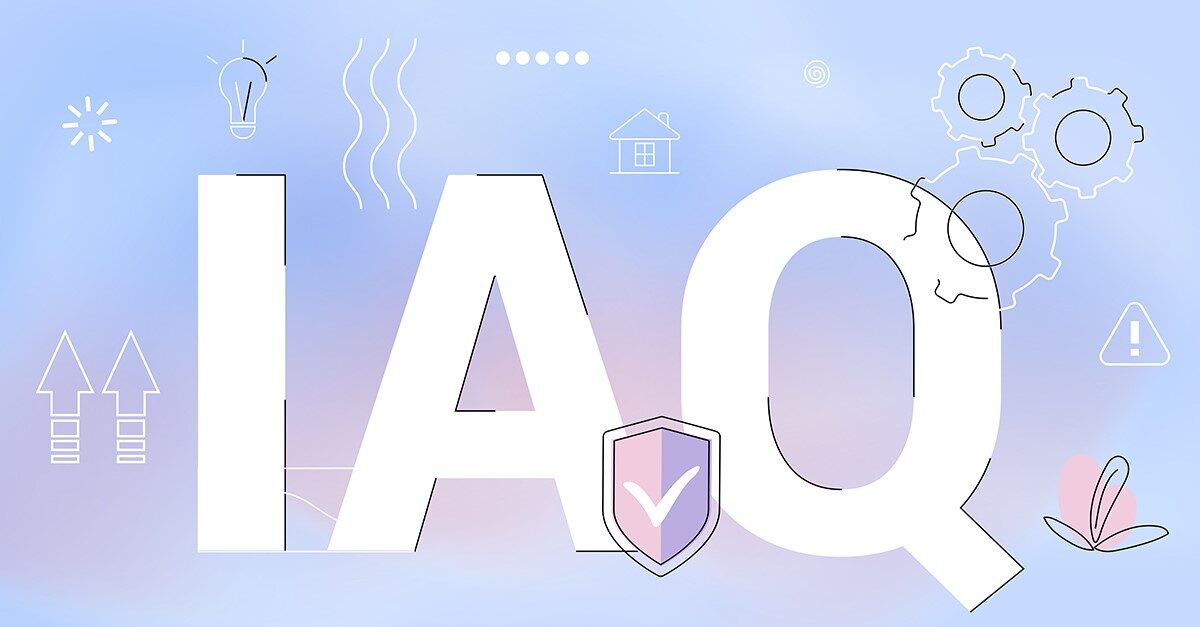Indoor air quality (IAQ) and methods to improve IAQ have become hot topics among in-house custodial professionals, particularly as they explore various technologies and consider hiring contractors to install them. Here are three exciting examples of newer or in-development technologies that can help all facility occupants enjoy cleaner air.
1. Digital twins
Facility management professionals must identify the factors that most often reduce indoor air quality. They can then use those insights to pinpoint problems and devise effective solutions. Fortunately, digital twins (virtual replicas of physical objects or systems that simulate real-word conditions) are helpful resources that allow people to test various options in a controlled, virtual environment before proceeding with them in real life.
In an example from the European Union (EU), a project was launched in 2022 to optimize indoor air quality using digital twins. The participants consist of 23 partners from nine European nations. This initiative—which runs until September 2026—will involve using data and digital twin simulations to find the conditions that create the best possible indoor air quality.
However, these researchers also recognize the complicated reality that environments differ depending on factors such as a building’s age, the activities occurring in it, and the number of occupants. Additionally, IAQ standards can vary by country or individual workplace. Digital twins can accommodate all those intricacies and many others, allowing facility managers to plan for current and future needs and feel confident about their decisions.
Digital twins are already commonly used in construction. They provide users with detailed insights into entire structures, helping to identify which options are likely to work or may prove unsuitable for specific buildings or projects.
Facility management leaders can review the numerous successful digital twin use cases from the construction industry—as well as manufacturing, healthcare, and others—to realize that it makes sense to apply this high-tech tool to improve indoor air quality, too.
2. Improved smart sensors
Many facility management professionals use numerous sensors to stay abreast of up-to-the-minute statistics about humidity, temperature, air quality, and more. Some sensors can differentiate between various pollutants, detecting whether they are cigarette smoke, pollen, or something else. Those specifics tell management teams how to respond to real-time data or trends.
Sensors can increase occupant satisfaction and keep the environment within set parameters. Employees are more productive in comfortable environments. Monitoring workplaces and making the necessary changes to promote well-being leads to mutually beneficial outcomes. Additionally, when people love where they work, they are more likely to stay in their positions long-term and recommend the company to others for open positions.
Many air quality sensors serve multiple purposes. For example, some link to the climate control and lighting systems and recognize occupied versus empty rooms. They then respond automatically to make the appropriate adjustments. Sensors are also available that use high-speed, accelerated air-exchange systems to automatically purge the room’s air after people leave.
Research also suggests that people will notice IAQ improvements because their workplaces need to catch up in this area. Consider a 2023 study of American and Canadian workers. The results showed only 29% of respondents perceived their company’s indoor air as “very clean.”
Smart sensors are unobtrusive options that increase a facility management team’s awareness of real-time conditions. Leaders can then use that information to develop internal IAQ standards or track how conditions change over time after specific technologies or rules are implemented.
3. Subscription-based models
Many leaders lack the upfront resources to make significant and immediate technological purchases or other building upgrades. This reality explains why the subscription-as-a-service model has become a popular way for people to access software, specialized manufacturing equipment, robots, and other items by paying subscription fees.
Over the last couple of years, this option has become available for corporate teams concerned with IAQ standards. One company offering an indoor-air-quality-as-a-service package combines science and technology to assess customers’ current IAQ. The results establish benchmarks and shape key performance indicators, guiding facility managers on what they must do to reach the desired outcomes.
Additionally, there is a 24/7 monitoring component, and subscribers will receive annual indoor air quality reports based on the compiled data. Those statistics reveal what is going well and which areas need the most improvement, supporting strategic resource allocation.
This technology is also maximally accessible and affordable because people can spread the costs over time. Such options fit neatly into existing budgets, and many companies provide detailed breakdowns of what clients get with each chosen package.
Facility management professionals interested in subscribing should first clearly define their organization’s goals, budget, current IAQ challenges, and building use or occupancy specifics. Having those details ready for conversations with sales team members or other tech vendor specialists will help make conversations go smoothly and set accurate expectations for everyone involved.
Tech to maintain acceptable IAQ standards
Indoor air quality is a pressing concern for custodial professionals, corporate decision-makers, employees, and others. Setting and maintaining IAQ standards can be challenging, especially for those pursuing these ideals for the first time. However, these technologies make both objectives more achievable, providing decision-makers with clearer insights and trustworthy, relevant data.




